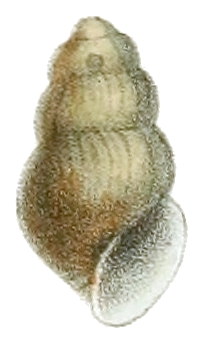List by drainage basin
All rivers in Alabama eventually flow into the Gulf of Mexico. This list arranges rivers into drainage basin, which are ordered by the location of the mouth of the main stem from east to west. Tributaries are ordered from mouth to source (subject to being within the borders of Alabama).
Gulf Coast (east)
- Yellow River
- Shoal River (FL)
- Five Runs Creek
- Lightwood Knot Creek
- Blackwater River (Pensacola Bay)
- Perdido River
- Blackwater River (Perdido Bay)
- Styx River
Mobile Bay
- Mobile River-Tensaw River
- Spanish River
- Threemile Creek
- Chickasaw Creek
- Crab Creek
- Big Bayou Canot
- Big Lizard Creek
- Little Lizard Creek
- Middle River
- Cedar Creek
- Alabama River
- Majors Creek
- Limestone Creek (Alabama River tributary)
- Big Flat Creek
- Cane Creek
- Bear Creek (Alabama River tributary)
- Pursley Creek
- Beaver Creek
- Dixon Creek
- Pine Barren Creek
- Chilatchee Creek
- Bogue Chitto Creek
- Cedar Creek
- Cahaba River
- Soapstone Creek
- Mulberry Creek
- Old Town Creek
- Big Swamp Creek
- Ivy Creek
- Swift Creek
- Tallawassee Creek
- Pintlala Creek
- Catoma Creek
- Autauga Creek
- Tallapoosa River
- Coosa River
- Mortar Creek
- Callaway Creek
- Weoka Creek
- Chestnut Creek
- Hatchet Creek
- Walnut Creek
- Yellow Leaf Creek
- Paint Creek
- Waxahatchee Creek
- Peckerwood Creek
- Yellowleaf Creek
- Tallaseehatchee Creek (Coosa River tributary)
- Talladega Creek
- Kelly Creek (Coosa River tributary)
- Choccolocco Creek
- Cane Creek
- Ohatchee Creek
- Big Canoe Creek
- Big Wills Creek
- Terrapin Creek
- Little River
- Chattooga River
- Tombigbee River
- West River
- Bassetts Creek (west side Tombigbee River tributary)
- Bassett Creek (east side Tombigbee River tributary)
- Jackson Creek
- Santa Bogue Creek
- Turkey Creek
- Okatuppa Creek
- Big Tallawampa Creek
- Bashi Creek
- Wahalak Creek
- Sucarbowa Creek
- Horse Creek
- Tuckabum Creek
- Beaver Creek
- Kinterbish Creek
- Chickasaw Bogue
- Cotohaga Creek
- Sucarnoochee River
- Spring Creek
- Hall Creek
- Black Warrior River
- Brush Creek
- Trussells Creek
- Noxubee River
- Sipsey River
- Lubbub Creek
- Big Creek
- Luxapallila Creek
- Buttahatchee River
- Bull Mountain Creek
Gulf Coast (west)
- Pascagoula River (MS)
Mississippi River
- Mississippi River (LA, MS, TN, KY)
- Ohio River (KY)
- Tennessee River
- Bear Creek
- Second Creek
- Mulberry Creek
- Cane Creek
- Little Bear Creek
- Spring Creek
- Cypress Creek
- Shoal Creek
- Town Creek
- Bluewater Creek
- Big Nance Creek
- Second Creek
- Elk River
- Flint Creek
- Limestone Creek
- Cotaco Creek
- Indian Creek
- Flint River
- Paint Rock River
- Big Spring Creek
- Short Creek
- Town Creek
- South Sauty Creek
- North Sauty Creek
- Mud Creek
- Coon Creek
- Crow Creek
- Widows Creek
- Long Island Creek (Tennessee River tributary)
- Jones Creek
- Lookout Creek
- Tennessee River
- Ohio River (KY)
















